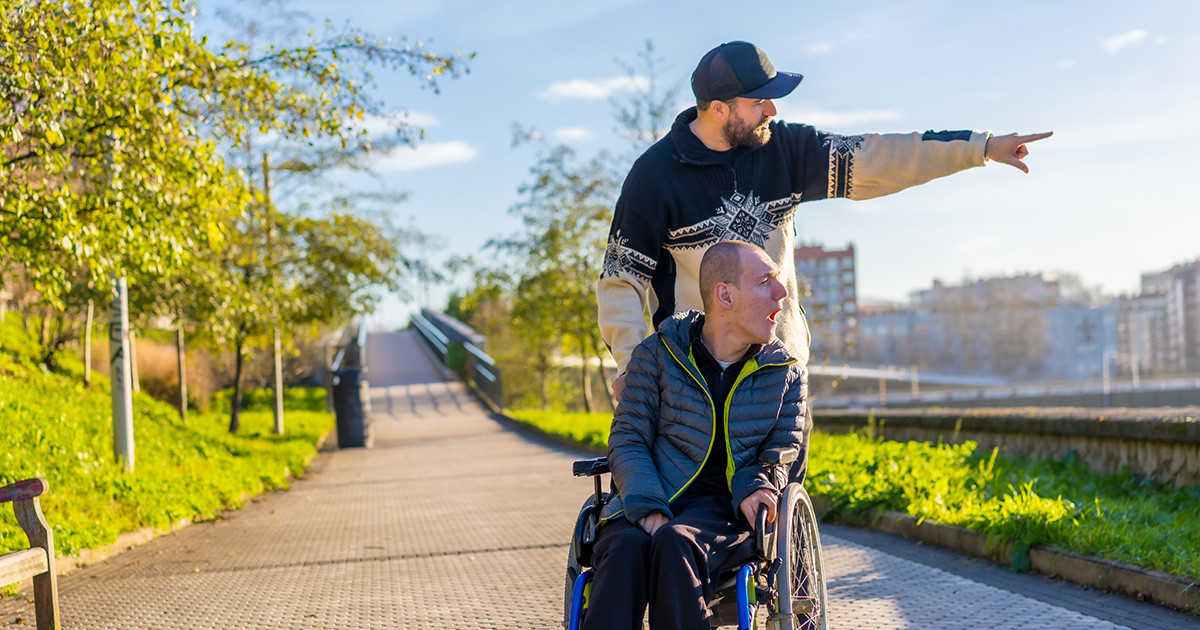Older Americans tend to be the primary users of long-term services and supports (LTSS)—medical and nonmedical aid provided at home, in the community, or in facilities for people with physical, intellectual, mental, or other conditions. But new data suggest that younger people are a key segment of LTSS users, with distinct needs. Almost one-third of people who use LTSS provided by state Medicaid agencies are under age 21, according to a new report from the Centers for Medicare & Medicaid Services (CMS).
The report, one of three produced by Mathematica for CMS and recently released to the public, reveals key insights into the use of and expenditures for Medicaid LTSS in 2022 for people ages 0 to 20.
Other key findings include the following:
- Spending on services and supports for people ages 0 to 20 made up about 10 percent of total Medicaid LTSS expenditures in 2022.
- Among users of home and community-based services (HCBS), person-centered care delivered in the home and community, 2.5 million (32 percent) were ages 0 to 20. They accounted for $17.0 billion in HCBS spending, or 13.2 percent of total HCBS spending across all age groups.
- Among institutional users, about 100,000 (8 percent) were ages 0 to 20. They accounted for $3.5 billion in institutional spending, or 5 percent of total institutional spending across all age groups.
- The share that people ages 0 to 20 comprised of total LTSS users ranged from 7 percent (Massachusetts) to 60 percent (Georgia).
“Many young people rely on LTSS provided by state Medicaid agencies, and they tend to have different needs than older Medicaid beneficiaries,” said Andrea Wysocki, senior researcher at Mathematica, which conducts LTSS analytic work for CMS. “Our continued work in this area could help states better meet the needs of younger versus older users.”
Two Other Reports Show Common Services, State Expenditures
The second CMS report shows that, across the combinations of different programs and state plan options that states use to deliver LTSS, state plan rehabilitative services was the most common among HCBS users. Section 1915(c) waiver services was the largest HCBS expenditure category, and nursing facility users and expenditures made up the largest share of institutional users and expenditures.
The third report discusses data on HCBS users and expenditures as a share of total Medicaid LTSS users and expenditures. It provides a snapshot of CMS’s progress in working with states to shift Medicaid spending from institutional care to services offered at home or in the community.
More Progress Towards HCBS
For decades, CMS has prioritized LTSS in home and community settings because Medicaid beneficiaries tend to prefer those settings, and the cost of the services is usually less than half what it would be in an institution. Although most national Medicaid LTSS spending has gone toward HCBS over the past decade, the level varies by state and demographic group.
The latest data show that for the nearly one in three people ages 0 to 20 who received LTSS in 2022, about 97 percent received HCBS. States did not perform as well for LTSS users ages 65 and older; in this group, only 64.9 percent of users received HCBS. As states continue efforts to increase high-quality HCBS for all age groups, they have the most room for improvement with people ages 65 and older.
The variation in the HCBS rebalancing ratios by age group were related to the varied types of services each age group used. Older Medicaid beneficiaries tended to use services covered through HCBS waiver programs and home health state plans if they were in home and community settings, while using nursing facilities for institutional care. In contrast, younger beneficiaries in home and community settings tended to use rehabilitative services, including services to address physical or mental health conditions, and to use mental health facilities for institutional care.
“Overall, far more people received HCBS than institutional services in 2022, which is step toward meeting CMS’s goals to shift users away from institutional care,” said Wysocki.
Data tables for 2022 are available on the CMS Website.


